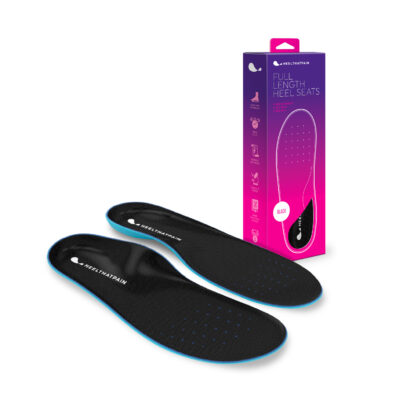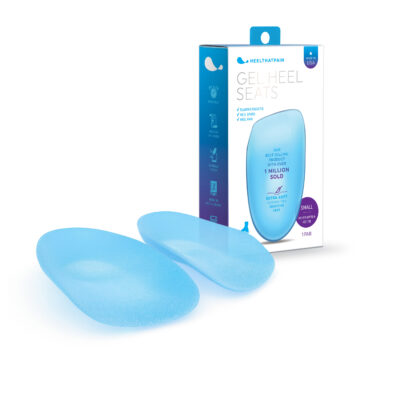 Plantar fibromatosis, also known as Ledderhose’s disease, is a condition that causes benign, slow-growing nodules to form along the fascia of the foot.
Plantar fibromatosis, also known as Ledderhose’s disease, is a condition that causes benign, slow-growing nodules to form along the fascia of the foot.
The nodules may grow slowly, undetected for months or even years at a time, followed by sudden, rapid growth. As time passes and the nodules grow, walking may become uncomfortable or painful.
While this condition sounds scary, it is relatively rare, and the nodules are almost never malignant. How will you know if the symptoms you’re experiencing are plantar fibromatosis? What causes this condition? Is plantar fibromatosis related to plantar fasciitis? And what are your options for treatment if you are diagnosed with plantar fibromatosis?
Here’s what you need to know:
Plantar Fasciitis vs. Plantar Fibromatosis
While both plantar fasciitis and plantar fibromatosis revolve around the fascia of your feet, the causes of the two conditions are typically considered to be very different. Plantar fasciitis is caused by overuse and trauma to the arch of the foot, while researchers believe that the primary cause of plantar fibromatosis is rooted in genetics.

While there are some researchers who believe that plantar fibromatosis can be triggered by the body’s healing response to a tear in the fascia–a possible connection to plantar fasciitis–this link has not been proven. It is, however, just one more good reason to take good care of your arches!

Regardless, it is possible to have both plantar fasciitis and plantar fibromatosis at the same time. And, depending on the location and severity of the nodules caused by plantar fibromatosis, orthotic inserts that lift, cushion, and support the arch of the foot may be an effective, non-surgical way to make walking and physical activity more comfortable.
Causes of Plantar Fibromatosis
Researchers are still working to understand the exact cause of plantar fibromatosis, but the general consensus is that the condition is genetically inherited. In other words, if someone in your family has this condition, you’ll want to pay special attention to the symptoms listed below. As with many genetic disorders, the genes for plantar fibromatosis can be influenced by a number of factors which increase the likelihood that you’ll develop this condition.
Risk factors for plantar fibromatosis may include alcoholism, smoking, and chronic stress to the feet. There also appears to be a connection between plantar fibromatosis and epilepsy, thyroid conditions, palmar fibromatosis (a condition affects the connective tissue in the hands), and diabetes. Men develop plantar fibromatosis more often than women.
Symptoms of Plantar Fibromatosis
Because the nodules from plantar fibromatosis develop so slowly–and may event stop growing altogether and become dormant for months and years–many people aren’t aware that they have this condition for many years.
Usually, the first symptom is a small, painless lump on the sole of the foot. In most cases, this lump appears that the highest part of the arch. Walking or physical activity may become uncomfortable of painful as the lump grows and rubs against your shoes or the ground as you walk.
Usually, you’ll only notice this lump in one foot. Only a small percentage of people who have plantar fibromatosis experience the condition in both feet at once.
Diagnosis and Treatment of Plantar Fibromatosis

If you notice symptoms that might indicate plantar fibromatosis, your doctor will likely recommend an MRI or sonogram as a first step. This will help you and your doctor see the extent of the plantar fibromatosis and determine next steps in treatment.
If the nodule(s) are small, your doctor will recommend that you avoid direct pressure, and may also recommend orthotic insoles that cushion and support your arch and relieve pressure to the nodules.
If conservative treatments aren’t effective, or if the nodules continue to cause pain while walking, your doctor may recommend radiotherapy to reduce the nodules’ size. The side effects of radiotherapy are minor, and this treatment has been shown to be approximately 80% effective (Panizzon & Seegenschmiedt, 2014).
Other non-surgical treatment options that you and your doctor may explore include cortisone injections and collagenase injections.
Surgery is usually recommended as a last resort, and only if the nodules cause unmanageable pain. Because the nodules are typically so closely situated to muscles, nerves, and tendons, it can be very difficult to remove all of the nodules. And any portion of the nodules that remain in the foot will continue to grow. Surgery also has a long recovery time and can be very costly.
There’s nothing more unsettling that discovering a lump on the foot. And while the symptoms of plantar fibromatosis can be disconcerting, the good news is that most cases can be managed effectively at home, without surgery. Recognizing the symptoms, understanding your options for treatment, and then working with your doctor to determine how to best manage this condition will help get you back on your feet and in control of your health.




my of my in the right foot very large and the left one is size of sweet pea both very painful what can i use to stop the pain
My food doctor prescribed a clear jell-like medication called, “Pennsaid.” I put it on the bump and covered it with a bandaid. I am not sure how many days or weeks I did this until the bump decreased in size and was no longer painful. I was able to walk or run and forgot I had this problem. One day, for some reason, I tried a dab of Vick’s Vaporub on the bump and covered this with a bandaid. Since it was already under control, it prevented it from getting “active” again. Thinking it I no longer did nothing, I stopped the Vick’s. Now the problem has returned. So, I am back on the Pennsaid several times a day and I also use the Vick’s too. Until it is better, I found that I feel less pain walking in just socks or on rubbery mats. I found foam bottom shoes that are a little larger than I normally wear and don’t have much of an arch to irritate my hurt arch. The foot doctor told me to get an insert and cut out the arch area. I didn’t have much success with that and it was hard to fit the insert and my foot into my normal shoes. But, the Pennsaid and Vick’s Vaporub are effective -not as a total cure to make it go away, but as a way to get it under control to where you can do what you want and you won’t notice it. I wish you the best.
I have it in both feet alleays have they are big now
Dians, I hope they send you an email or you recheck this website. I have some suggestions that might help your arch pain since I deal with it too. If you get this as an email, please recheck the “heelthatpain.com” website. I wish you the best.
I have one on right foot do they grow big? how do we live our lifes what is the treatment we cant livr in pain.
I am replying to you because I am not sure if you will be sent an email with the information and if you will recheck this website. My heart feels for you because of your suffering. This is not an easy road, but have hope. I have some suggestions that helped me and I hope they help you, too. My foot doctor prescribed a clear jell-like medication
called, “Pennsaid.” I put it on the bump several times a day and covered it with a bandaid. After a while, I only put it on at night. I am not sure how many days or weeks I did this until the bump decreased
in size and was no longer painful. I was able to walk or run and forgot I had this problem. One day, for some reason, I stopped using the Pennsaid and I tried a dab of Vick’s Vaporub on the bump and covered this with a bandaid (nightly). Since it was already under control, it
prevented it from getting “active” again. Using the “Vick’s” alone was effective for over a year. Then, thinking I no longer needed to worry about my arch bump/pain, I stopped the Vick’s and after a few months, the problem returned. So, I am back on the Pennsaid several times a day and I also use the Vick’s too. When it is under control, I will only use the Vick’s. I would just use the Vick’s but I have this left-over Pennsaid. Until it is better, I found that I feel less pain walking in just socks or on those interlocking rubbery mats around the house (that come in colors or just black/grey for work areas). I, also, found foam bottom shoes, that are a little larger than I normally wear and don’t have much of an arch to irritate my hurt arch, are helpful. The foot doctor had told me to get an insert and cut out the arch area. I didn’t have much success with that and it was hard to fit the insert and my foot into my normal shoes. But, the Pennsaid and Vick’s Vaporub are effective -not as a total cure to make it go away, but as a way to get it under control to where you can do what you want and you won’t notice it. I wish you the best. Hang in there. If none of my suggestions help, or your foot doctor is of no help, find another. I believe that not all doctors have the same training or experience. They are good doctors, but perhaps just not as experienced with what ails some of us.
Hi! I have a Bunyan on my right foot with arch pain and a lump on my left foot. I’ve had nodules on my thyroid due to medicine and I also struggle with fibromyalgia. I’ve tried tea tree oil and peppermint oil on the bottom of my feet with socks on at night. I’ve heard tea tree oil and onion on the boy of the feet at night could help, I haven’t tried this.
Can this condition be on the side of the foot…right above the arch. I have a hard bony growth. My dr. did not know what it is but was not concerned. I also have dupuytran contractor in my hands.